February 14, 2021
Between life and death: an ant’s love story
Today on Valentine's Day, we take a closer look at the love life of ants.
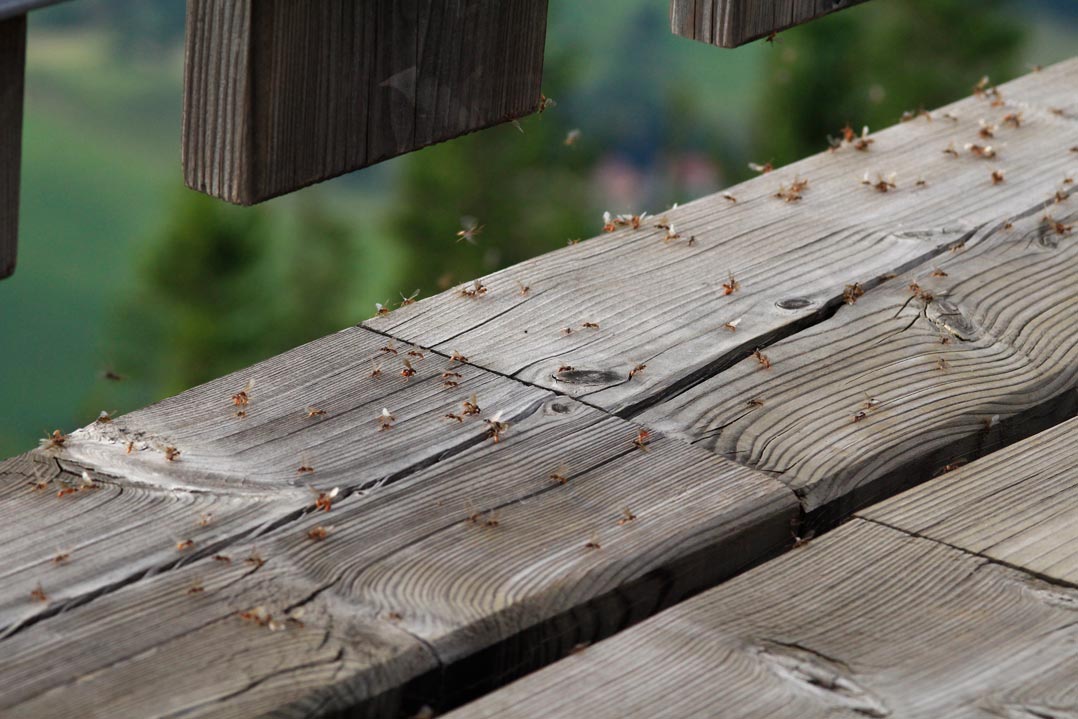
Love is what keeps you young! In some ant species, it even prolongs the life of the queens. For male ants, however, it usually ends in death. Scientists at the Institute of Science and Technology (IST) Austria are studying the love life of these social insects, from choosing a partner to the mating behavior of sick animals. On Valentine’s Day they provide insights into the ‘love stories’ of an ant colony.
On a warm summer day, shortly after the rain has loosened the earth, the time has finally come: millions of winged ants take to the skies to find a partner. More precisely, only the big, well-fed young queens, that is, reproductive female ants that have not yet mated, and the small males made especially for this moment, are found on this nuptial flight. Other members of an ant colony, the workers, are excluded from the mating frenzy, since they are incapable of procreation. After mating, the young queens descend to the ground, shed their wings and bury themselves in the earth, where they start a new colony. The short life of the males is over by then, making it difficult to study them.
Dancing fighters
Sina Metzler has therefore specialized in the tropical Cardiocondyla obscurior, an ant species in which many things are somewhat different. “The special thing about Cardiocondyla is that there are two different types of males – depending on the environmental conditions, stationary or flying males develop,” says the PhD-student in Professor Sylvia Cremer’s research group. Unlike most ant species, males of this species usually do not have wings. Accordingly, the small, light-brown animals do not have a nuptial flight. Their love life takes place behind closed doors, so to speak, within the ants’ nest. “The wingless males are produced all year-round, they don’t have a mating season. They patrol the nest, looking for young queens and fighting all their rivals,” the biologist says.
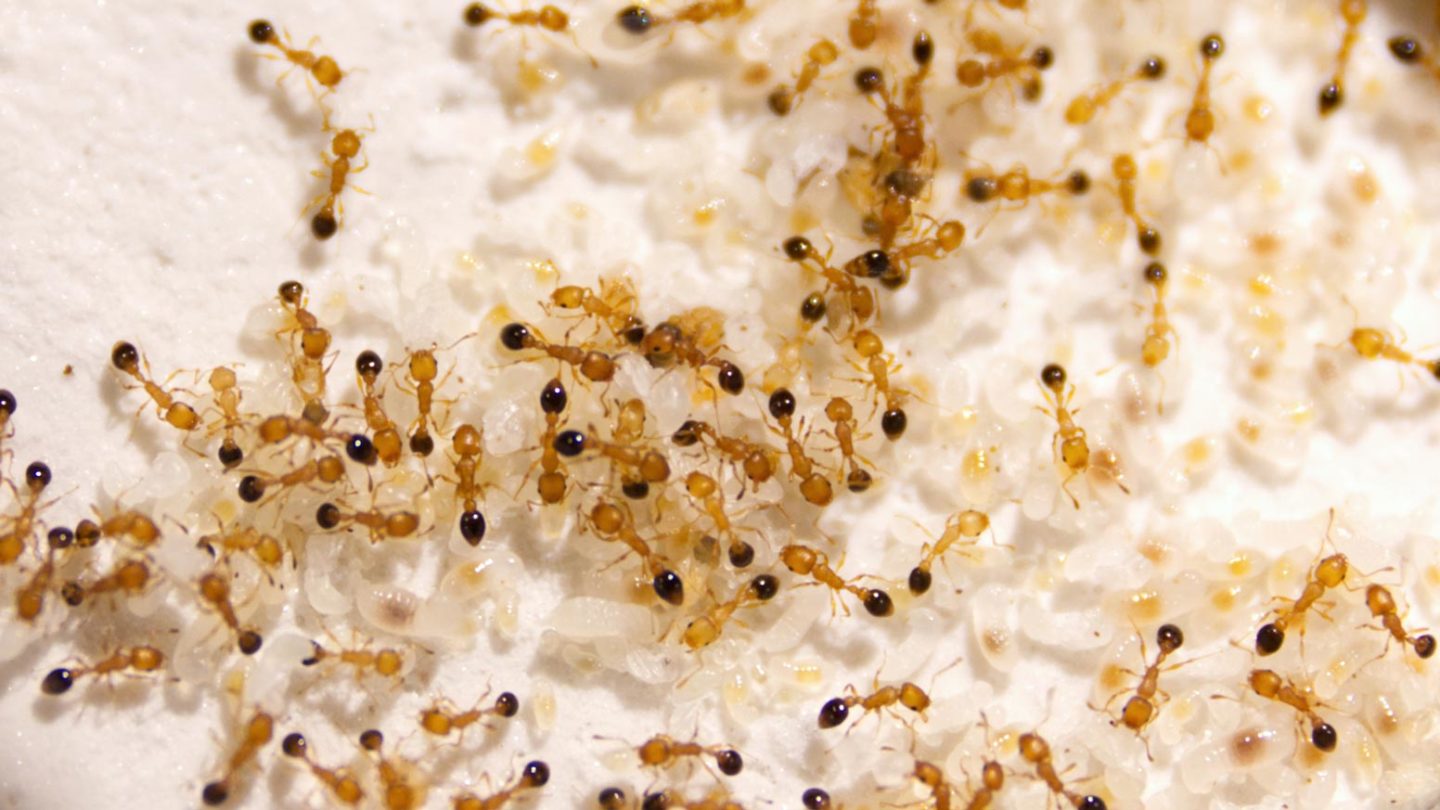
© Florian Strahodinsky/IST Austria
It is a fight to the death, but the reward seems worth it: The male that defeats all others can mate with several queens. Before mating, it dances around, sits on the queen and taps wildly with its antennae. This kind of courtship dance can last from hours to days, but is not always successful. Sometimes the queen tilts her abdomen and refuses to mate. “However, it is not yet known what criteria she uses to decide, there are still many open questions,” says Metzler.
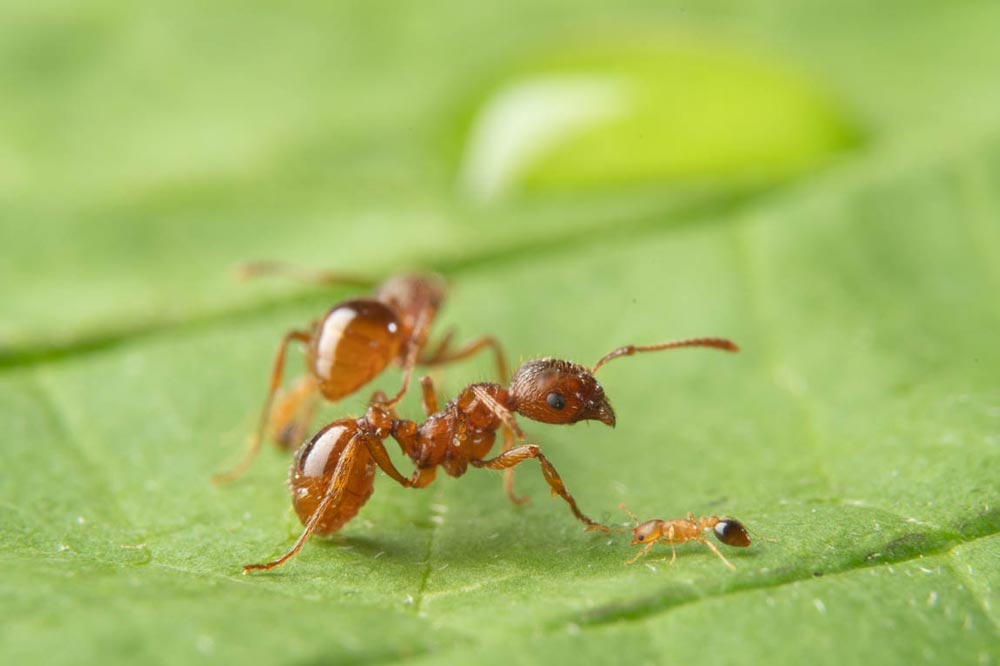
An ant colony ruled by multiple queens is especially common in invasive species that need to quickly establish themselves in a new area. “If there only is one queen, everything just happens much more slowly than if there were many queens in the nest,” explains Sina Metzler. New colonies are formed by queens leaving the maternal nest on foot with a few workers and founding a new one a little further away. The queens have functional wings but do not need them. After mating, they still shed their wings: “In queen ants, this is the sign that she is mated. If you see a queen without wings running around on the ground after the nuptial flight, you can be pretty sure she’s mated,” Metzler describes.
The scent of young queens
Under environmentally adverse conditions, Cardiocondyla obscurior also produces winged males. In contrast to their year-round rivals, these are quite peaceful and are left alone by the aggressive fighter males. This is due to their special scent, as Sylvia Cremer discovered a few years ago during her doctoral thesis at the University of Regensburg. Winged males imitate the scent of young queens, which occasionally even confuses the wingless males. After about ten days, this protection evaporates and they have to quickly disperse in search for virgin queens outside their natal nest.
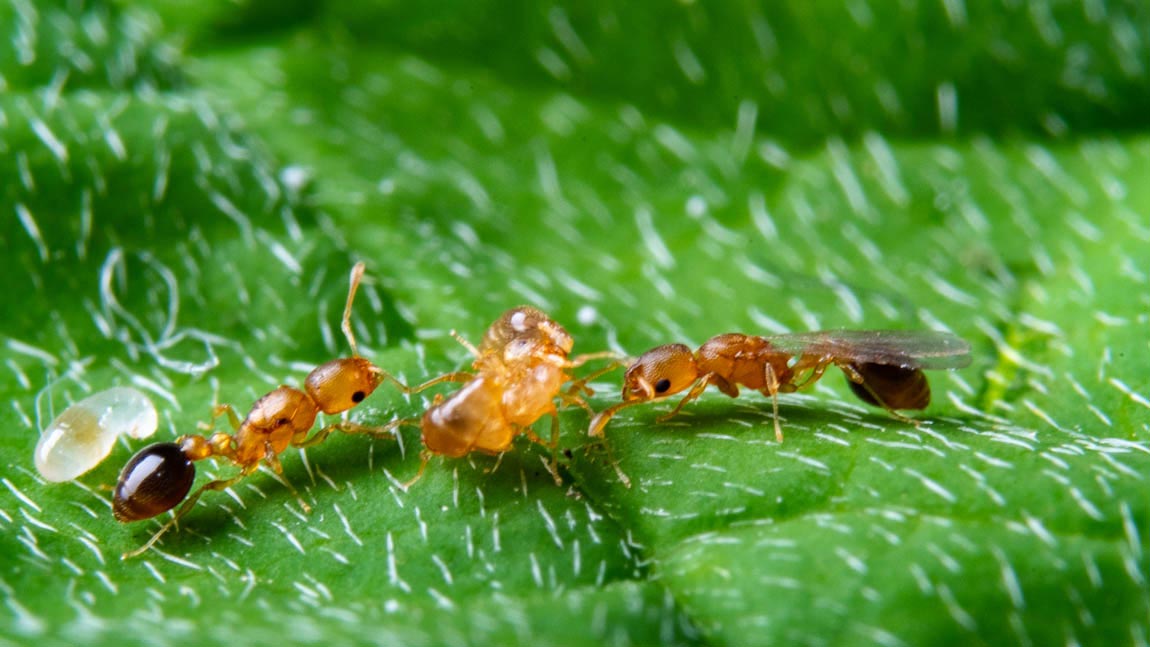
The queen, with whom the winged male mates, can look forward to a long life. The male together with his sperm delivers a protein that is presumably responsible for the life-prolonging effect of mating on female ants. Mating with wingless males also prolongs the life of the queen, but the effect is somewhat weaker. The fact that mated queens live longer than virgin queens is due to the lifelong bond of queens and their partners.
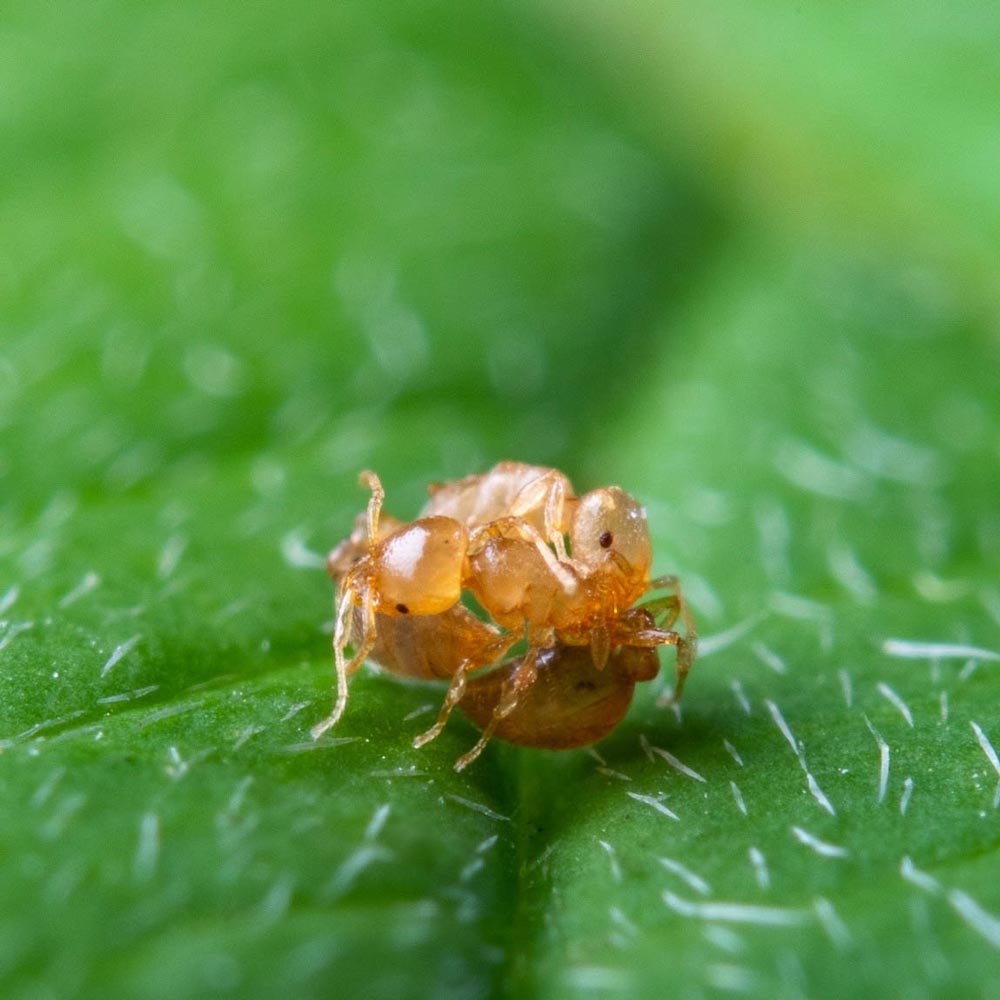
© Roland Ferrigato und Sina Metzler /IST Austria
In sickness and in health
“Usually, males are interested in quickly increasing their mate’s fertility, which often involves shortening their lifespan,” explains Sina Metzler. Ant queens, however, mate only once in their lifetime. Thereby, they store the sperm in their bodies for the rest of their lives and use it to raise all of the ant father’s offspring. “That is why the male is also interested in the queen living as long as possible. Especially because she first has to build up a colony, so she first needs workers to then raise reproduction-capable animals in the next cycle,” the scientist continues. Males can only carry their genes into the next generation if they have offspring capable of mating, but the sterile workers are a dead end for their genes.

© IST Austria
In her PhD-thesis at IST Austria, Sina Metzler now wants to find out how a pathogen affects the mating behavior of Cardiocondyla obscurior: “I would like to know if virgin queens avoid infection from their partner when mating, or if an infection at a low dose affects their continued survival and the development and disease resistance of the colony,” Metzler says. For, similar to humans, where mothers transmit protective substances to their babies via the placenta or breast milk, there also is an immune memory in social insects that can be passed down through generations.

Publication
Metzler, S., Heinze, J., & Schrempf, A. (2016). Mating and longevity in ant males. Ecology and Evolution. Wiley-Blackwell. https://doi.org/10.1002/ece3.2474
Metzler, S., Schrempf, A., & Heinze, J. (2018). Individual- and ejaculate-specific sperm traits in ant males. Journal of Insect Physiology. Elsevier. https://doi.org/10.1016/j.jinsphys.2017.12.003
Cremer, S., Sledge, M., & Heinze, J. (2002). Chemical mimicry: Male ants disguised by the queen’s bouquet. Nature. https://doi.org/10.1038/419897a
Schrempf A., Heinze J., Cremer S. (2005). Sexual Cooperation: Mating Increases Longevity in Ant Queens. Current Biology. https://doi.org/10.1016/j.cub.2005.01.036
Cremer S., Schrempf A., Heinze J. (2011). Competition and Opportunity Shape the Reproductive Tactics of Males in the Ant Cardiocondyla obscurior. PLOS One. https://doi.org/10.1371/journal.pone.0017323



